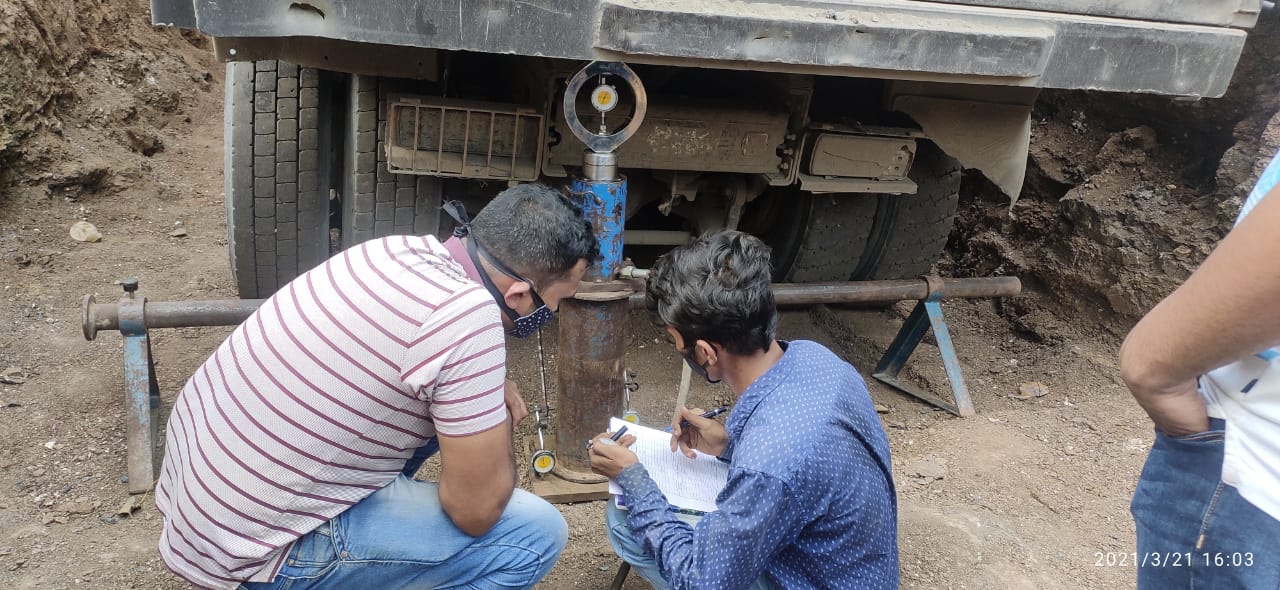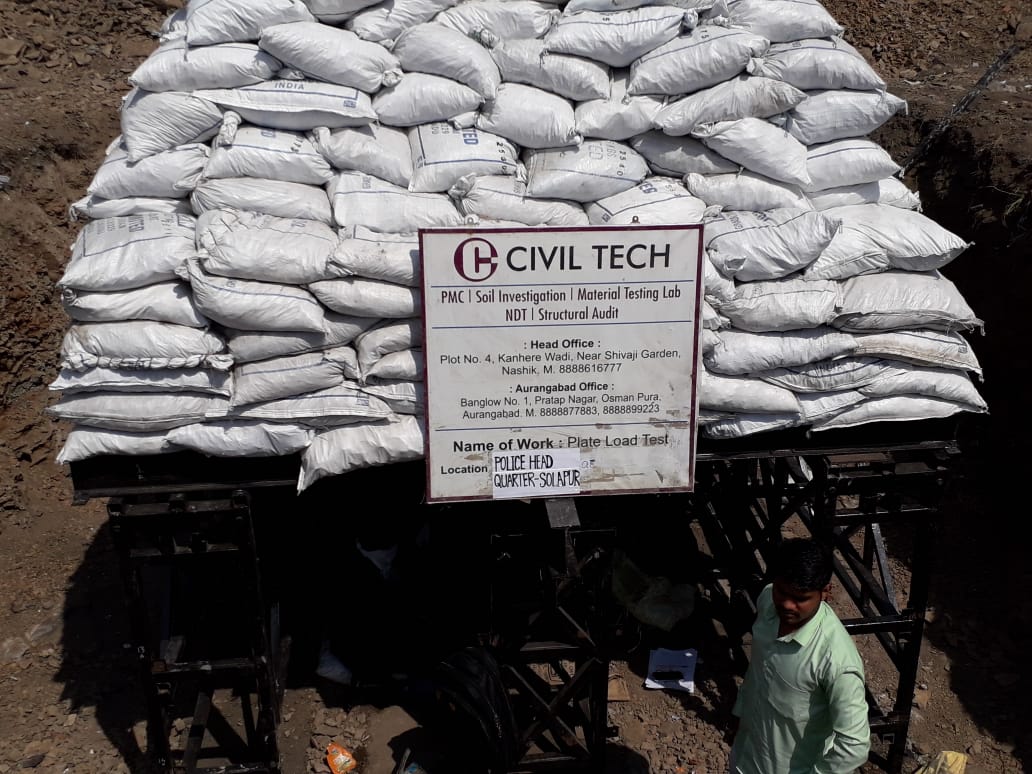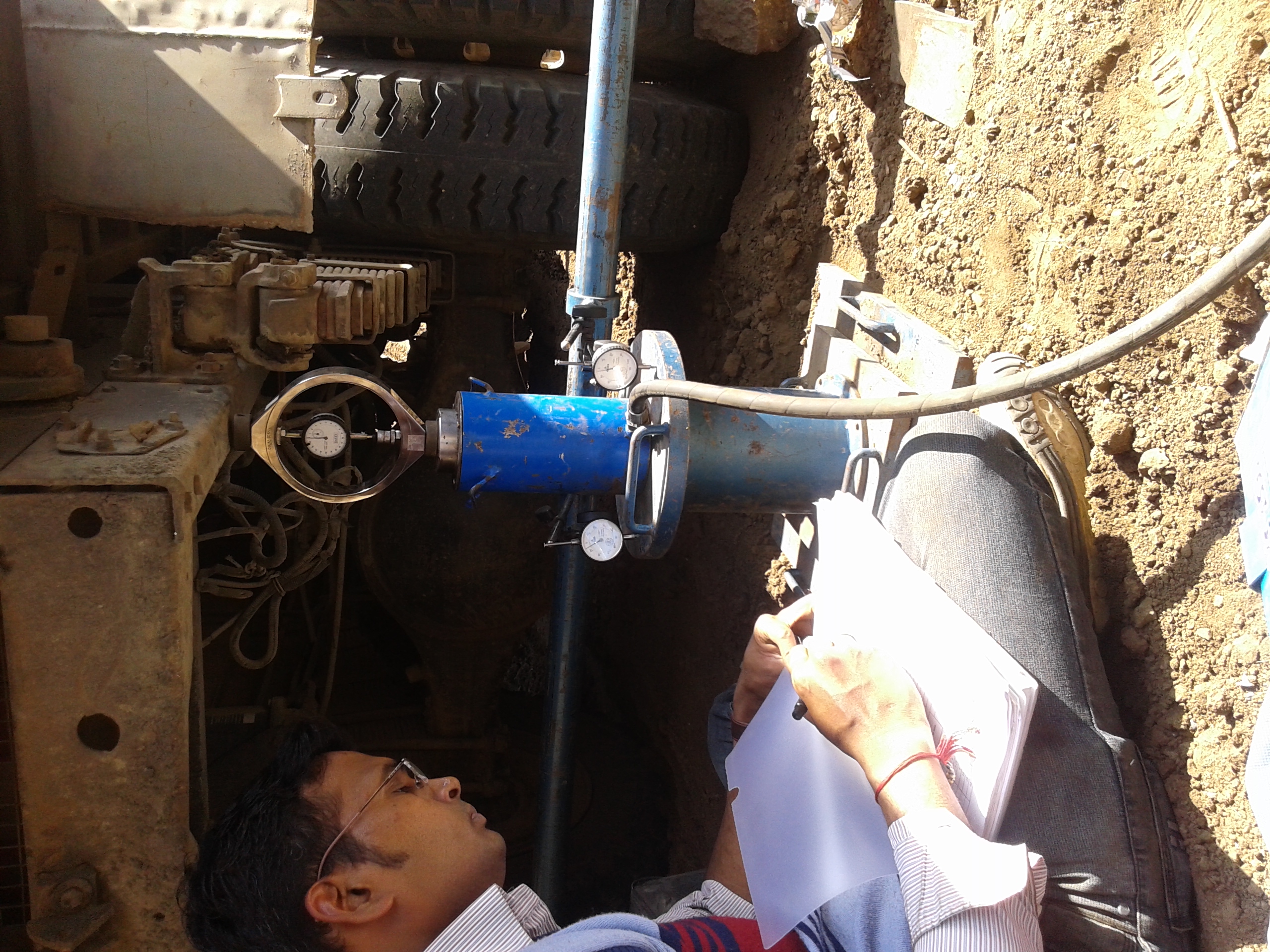Plate Load Test for Safe Bearing Capacity
Objectives - For designing shallow foundations, it is necessary to know the bearing capacity of soil at the desired depth. The plate load test is performed on-site to determine the ultimate bearing capacity of soil at the desired depth.
Data from the plate load test is helpful to confirm the design assumptions made from soil tests or can be used as a design parameter.
For clayey and silt soils and for loose to medium dense sandy soils with N < 15, 450 mm square plate is preferred. In the case of dense sandy or gravelly soils (15 < N < 30) three plates of sizes 300 mm to 750 mm is used depending upon practical considerations of reaction loading and maximum grain size.
Civil Tech perform Plate load test by Kentledge as well as Truck load method.
a) Kentledge Method
Loading platform truss of sufficient size and properly designed members so as to estimate load reaction for conducting the test shall be used
b) Truck Load Method
Loading was carried through reaction of truck weighing approximately 35 tons.
AS PER IS 1888
- a) Kentledge Method - Loading platform truss of sufficient size and properly designed members so as to estimate load reaction for conducting the test shall be used.
- b) Truck Load Method - Loading was carried through reaction of truck weighing approximately 35 tons.








